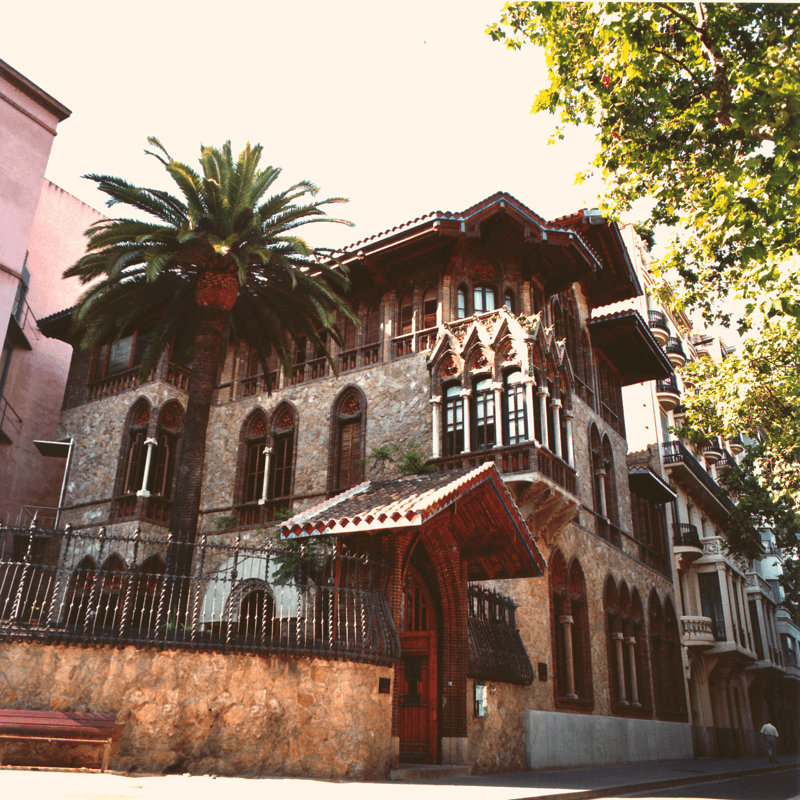
A Modernista house built in 1901 by Joan Rubió i Bellvé for Macari Golferichs, a tropical wood trader. After the Civil War it became a religious school and in the late 1960s it was bought by a private developer with the idea of demolishing it and building flats. But the insistent protests of the neighbours prevented “el Xalet”, as it is popularly known, from falling victim to speculation. In 1980 the Barcelona City Council recovered the ownership of the building to convert it into a civic centre. In 2004 it was opened after a restoration that included the façades, the roofs, the stone walls, the woodwork and the ceramics.
Actions on Modernista Heritage City Council Programme Barcelona, posa’t guapa (Barcelona, get pretty)
Restoration of façades and roofs, cleaning of stone walls, treatment of wood and replacement of glazed ceramics.
Restoration of façades and repair of wooden structure on roof (anti-xylophage treatment). 2003
Get the Guidebook of Barcelona Modernisme Route
The Barcelona Modernisme Route is an itinerary through the Barcelona of Gaudí, Domènech i Montaner and Puig i Cadafalch, who, together with other architects, made Barcelona the great capital of Catalan Art Nouveau. With this route you can discover impressive palaces, amazing houses, the temple that is symbol of the city and an immense hospital, as well as more popular and everyday works such as pharmacies, shops, shops, lanterns or banks. Modernisme works that show that Art Nouveau took root in Barcelona and even today is still a living art, a lived art.
The Guidebook of Barcelona Modernisme Route can be acquired in our centers of Modernisme.


